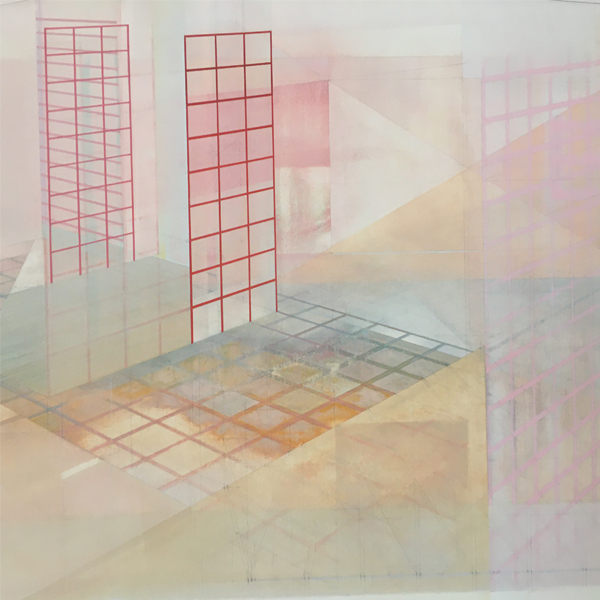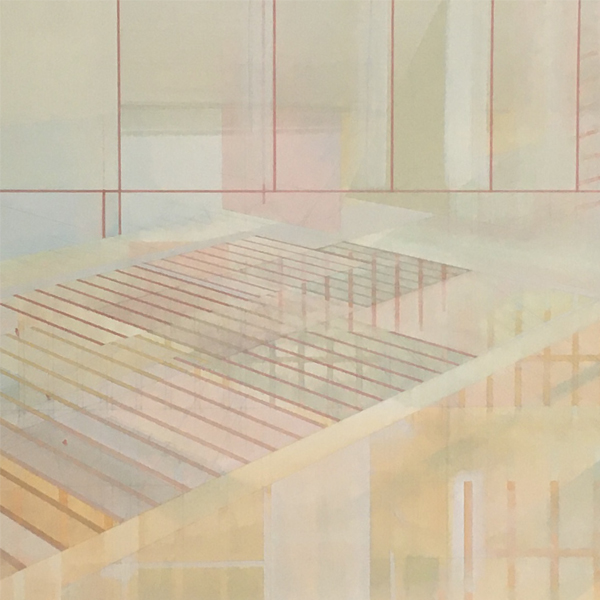Jenny West
Jenny West produces drawings both for and as sculpture. She constructs perspective structures that are placed in architectural spaces, and also comparable structures in the more conventional form of works on paper. Her images are gradually teased into being over time through a process of trial and error, sometimes through transplanting imagery from one source to another. Although based on domestic objects or small ready-made images they possess an independent authority that can be read as either monumental or microscopic.
Through precise and methodical processes she painstakingly builds drawings concerned with pattern, geometry and the spatial. Born in England, in 1957, West studied Sculpture at Falmouth School of Art and Tapestry at The Royal College of Art. She was the recipient of an AHRC Research Fellowship held at Loughborough University (2000-03). West has exhibited at The Whitworth Art Gallery, Leeds City Art Gallery and Yorkshire Sculpture Park and the Government Art Collection and the Arts Council, England have collected her work among other institutions.

Jenny’s drawings envisage objects that do not yet exist or are impossible to realise due to their ephemeral or ambiguous qualities. Her work examines the relationship between monumentality and immateriality.
Room to Room 1 & 5 form part of a series of seven drawings made during 2020/21. Measurements taken from objects and furniture within her home form plans for perspective projections of visionary structures; delicate, skeletal objects which, freed from the constraints of matter and mass, hover in an uncertain space. Precise, delicately drawn and coloured grids evoke translucent walls, pavilions and walkways suggesting concealment, privacy and habitation.
The perspective drawings are made on paper stretched flat to the wall with vanishing points extending beyond the papers edge, the wall is important and integral to these works. Decisions made in the progression of drawing form a visible trace of layered and erased information, images emerge and then demand their own rules for progression and development. The qualities of slightness and in-completeness in the work belies a precise and painstaking approach to their construction. A slow process of distillation is evident as drawings become, in turn, more concise and hesitant through constant change, revision and adjustment. The works exist somewhere between a plan for an architectural form and a mapping of time.

See more

